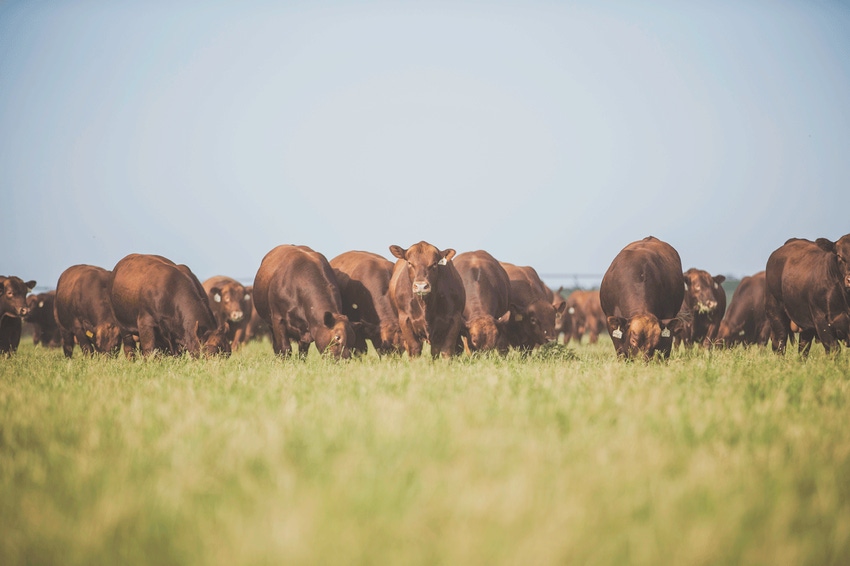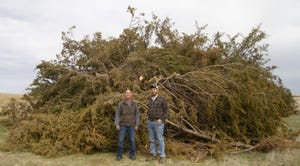Profitability, finances and your ranching future
Many ranches are struggling. Are you investing wisely in expenses that pay?
May 7, 2020

Last month I raised the question, “Are you ranching for the past or for the future?” I don’t like saying this, but many good conventional ranchers are quickly or slowly going broke. The speed at which they are going broke is usually determined by the size of their debt in relationship to the size of their gross income.
For many years, the price of things we buy (inputs) has increased faster than the price of our products. Yet, most ranchers continue to build and try to enhance a production system that has a heavy reliance on fossil fuel and iron, or machines, fuel, fertilizers, sprays of various kinds, feeding more, magic feed supplements, and many more.
That is not to say that some of these inputs don’t have a place in our production systems. But the arithmetic doesn’t work very well when the price of inputs increases faster than the price of our products.
The most common attempt to improve profitability is trying to improve what we are currently doing. Those attempts are usually focused on improving the amount produced—crop yields or livestock weights. Sadly, too much academic research is focused on the previously mentioned inputs because the producers of those inputs provide much of the research grant money.
Too often we don’t associate the production increases with all the costs—some of which are not so evident but real and significant. When striving for bigger weaning weights, we typically consider how much more we pay for the bulls we use and how much more we have to spend on feed and other performance enhancing inputs.
But do we also consider the not-so-apparent costs of a reduction in stocking rate that happens when we have bigger and higher milking cows? Do we carefully observe as conception rates deteriorate and then try to compensate with more feed or “magic” supplements? Do we remember that bigger calves sell for less per pound than smaller calves? Do we consider reductions in overall herd health that are often associated with pushing our growth and milk genetics beyond what our environment will sustain?
To move forward and ranch in the future, we need to pay much less attention to improving “how” we are doing things and start paying more attention to “what” we are doing. Small changes will not make the improvement that most ranches need.
As mentioned last month, it is very refreshing and encouraging to me to see a growing number of ranchers, especially younger ranchers, attending seminars and visiting other ranchers to learn about grazing management and soil health, selection of the optimum calving season, reducing the use of fed feeds and even grazing year-round, enterprise selection and also stacking enterprises, etc.
They are building production systems that have a heavy reliance on soil, rainfall, sunshine and their God-given abilities and ingenuity, rather than a dependence on fossil fuel and iron. There is no meter on the rainfall and sunshine; and one’s ability to build and improve the soil can come with little expenditure of cash—just a willingness to study and learn. Yes, the courses do have a price tag, but the return can be many times the price of the course and attendant travel costs.
I hope repetition of the following is helpful.
Profitable ranches:
Cut overheads as much as possible—mercilessly.
Get excellent cow-herd reproduction at low cost.
Market well.
Focus on three key ratios:
acres per cow
cows per person
fed feed vs. grazed feed
These practices are not physically demanding, but they do require some mental exertion. The practices are part of and are based on sound ecological, economic and business management principles.
At times the mental effort can become emotional when you cut the overheads or leave an old practice. You get attached to things and methods you are familiar with. However, you’ll get over it.
You will find that good grazing management and improvement of the soil will become the key drivers in changes you will need to make. Everything else connects to and is largely driven by or facilitated by grazing management and the resultant improvement of soil, plants and livestock.
There will be some costs associated with good grazing management. Most ranches will need to spend some money on stock water development to have sufficient water in enough places to make adaptive, multi-paddock grazing work. Some fence (hopefully inexpensive electric) will be required.
I have yet to meet a good grazier who hasn’t said that the fence and water development has a very rapid payback. They also say they should have pushed the development faster.
Animal breeding will then be important to put together or design a herd with high reproduction rates that will function at low cost under your grazing management and in your environment. This herd will not consist of big, high milking cows. Many neighbors may wean bigger calves, but you will produce more pounds per acre and probably sell at a higher price per pound.
With well fitted and adapted livestock being grazed with intent to improve the soil and plant production, you will begin to reduce acres per cow. By having them fairly tightly grouped in few herds (or even one), cows per person will increase.
The grazing management will provide a longer season of green growth and also facilitate stockpiling of winter grazing to increase grazing days and reduce feeding days. Improving these three key ratios has tremendous leverage to improve profitability.
Teichert, a consultant on strategic planning for ranches, retired in 2010 as vice president and general manager of AgReserves, Inc. He resides in Orem, Utah. Contact him at [email protected]. The opinions of the author are not necessarily those of beefmagazine.com or Farm Progress.
About the Author(s)
You May Also Like
.png?width=300&auto=webp&quality=80&disable=upscale)


